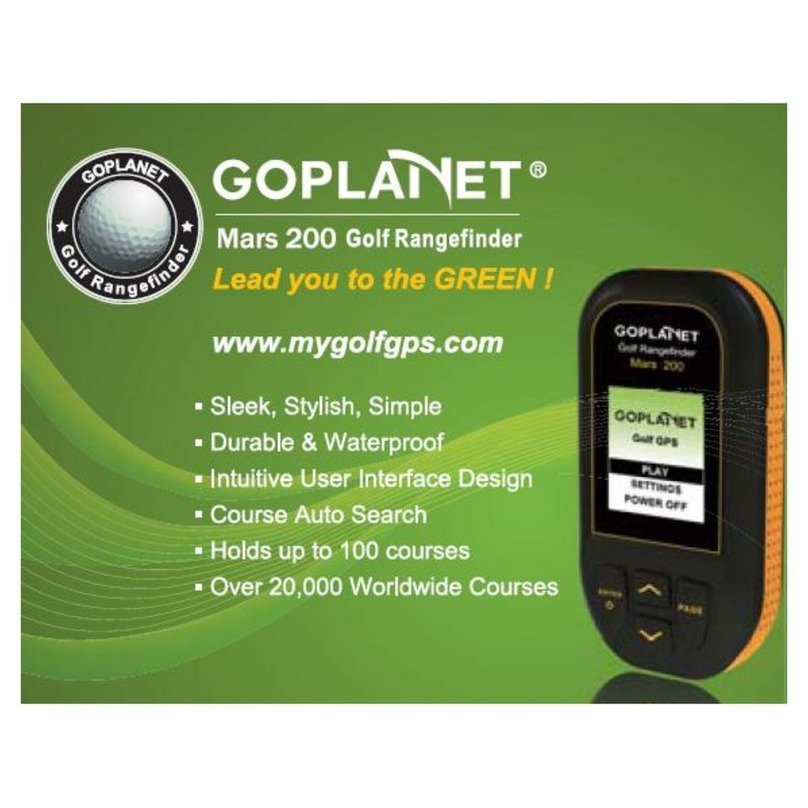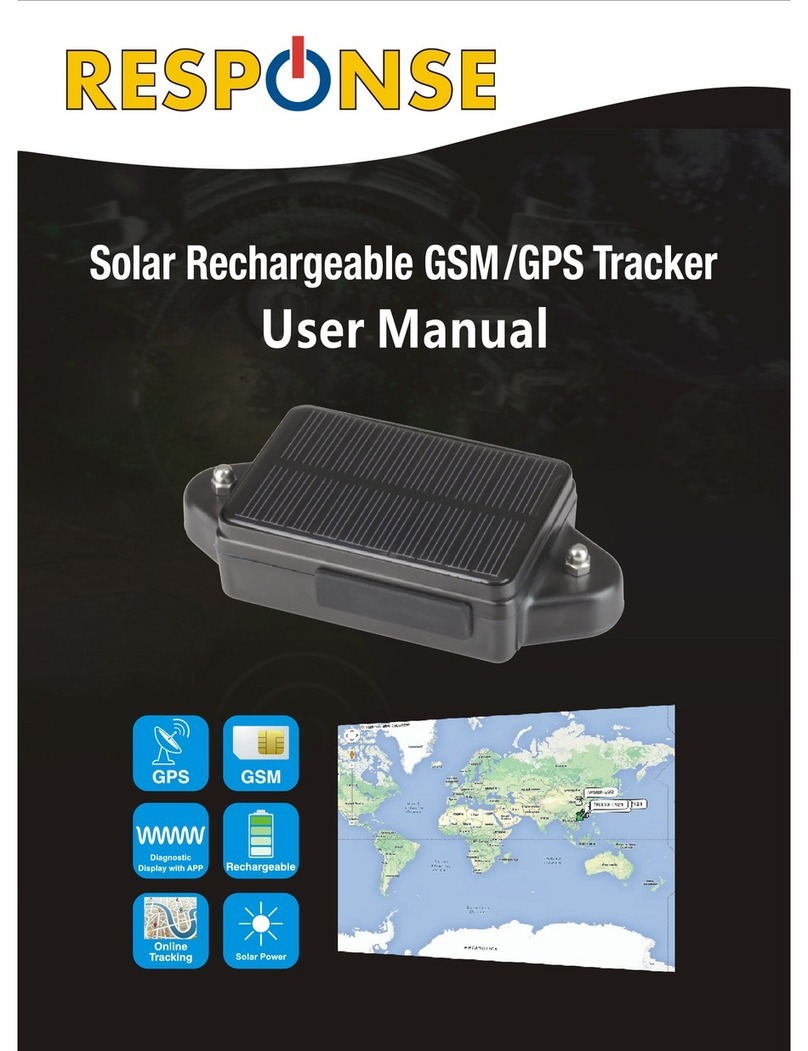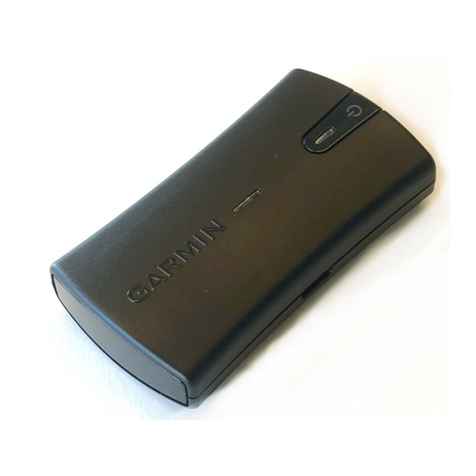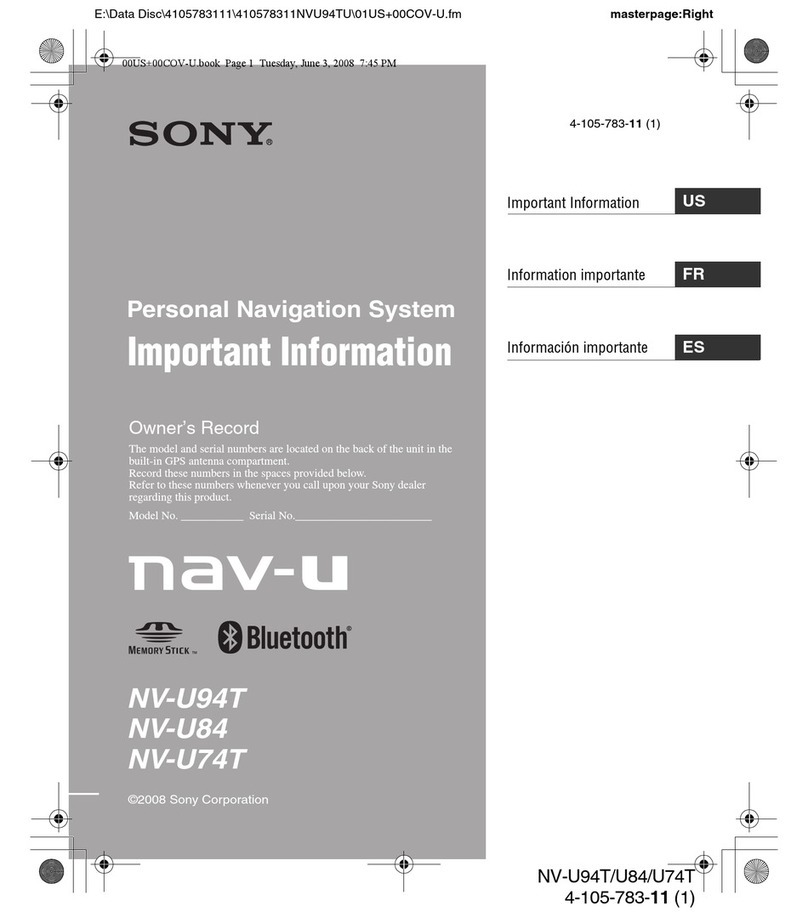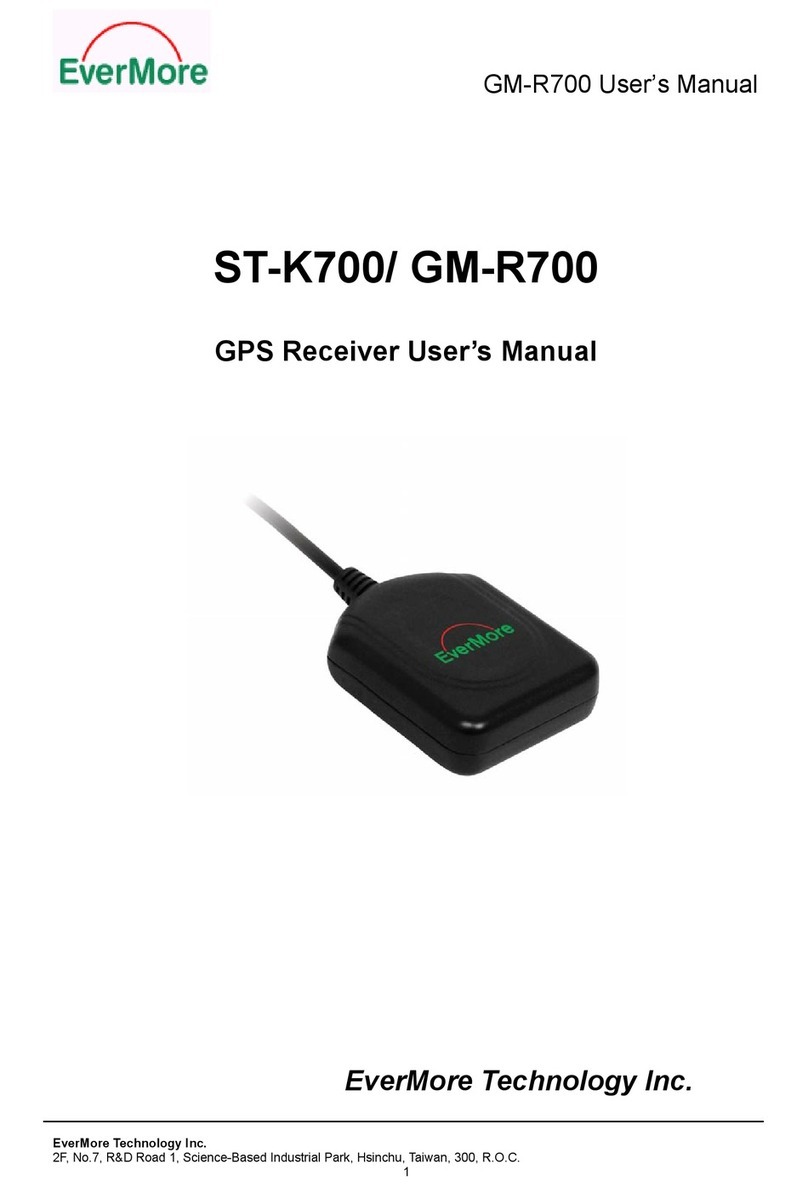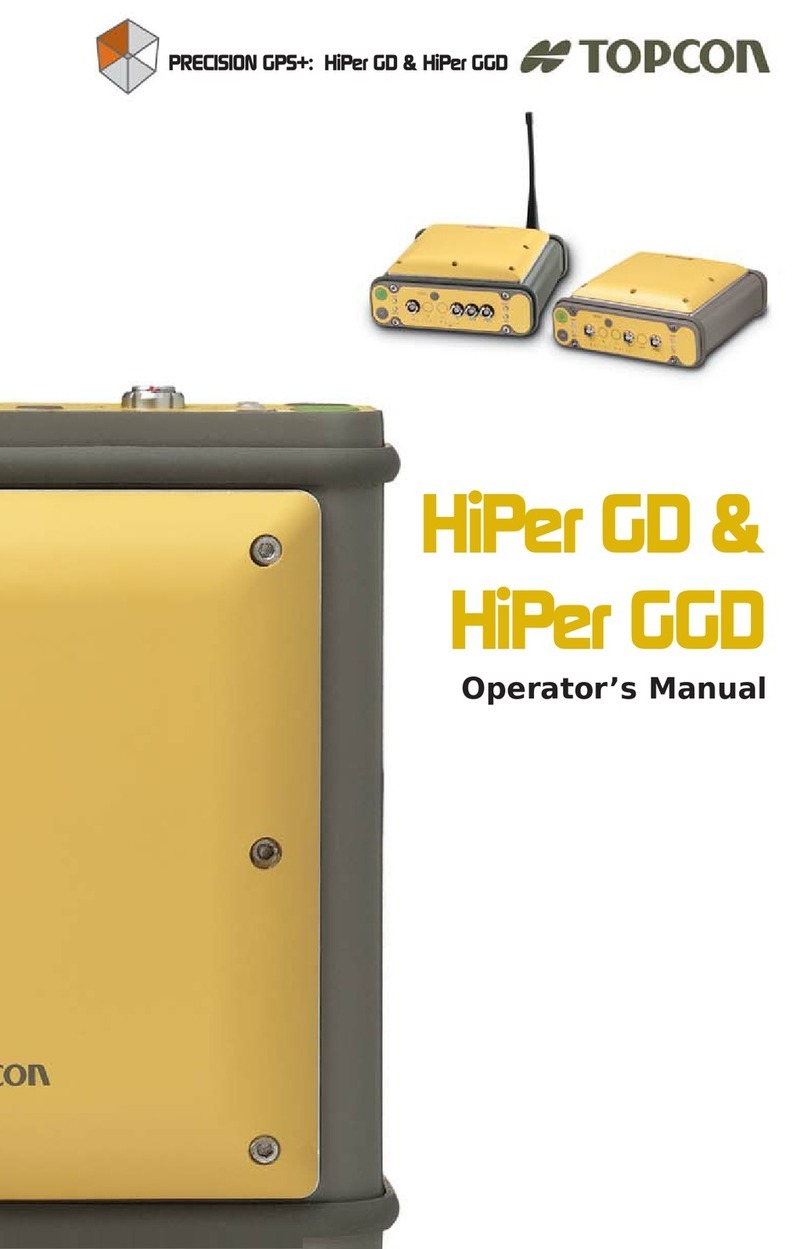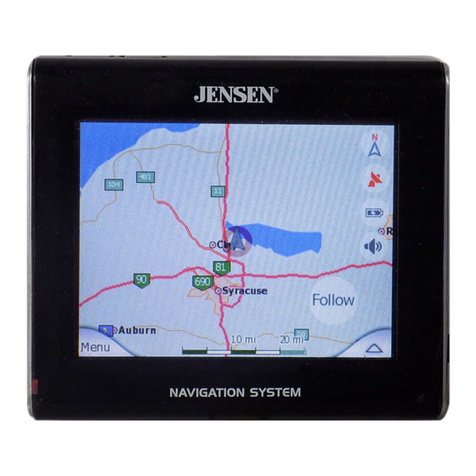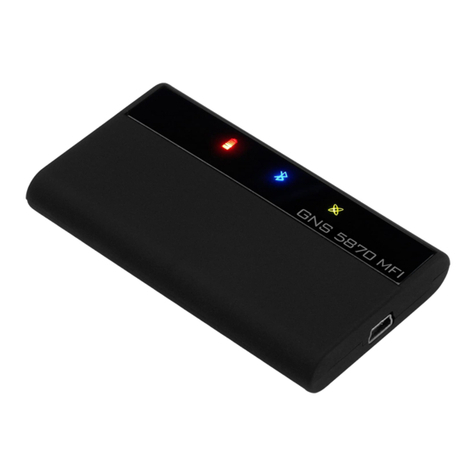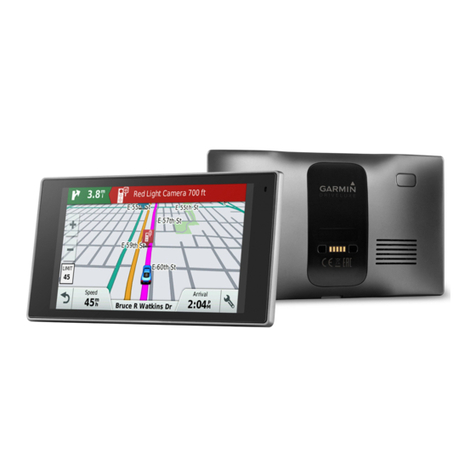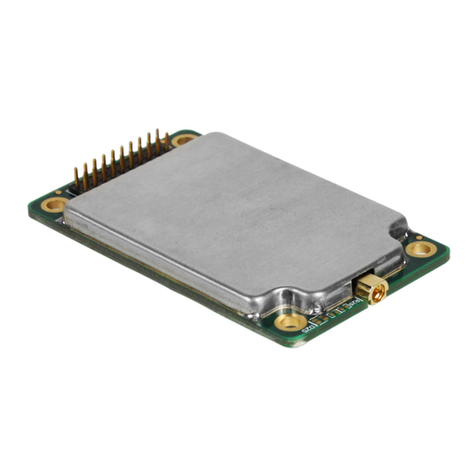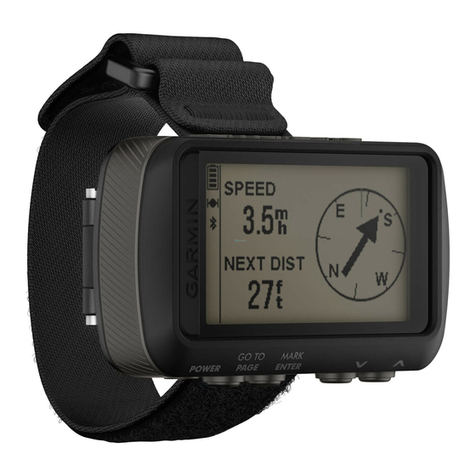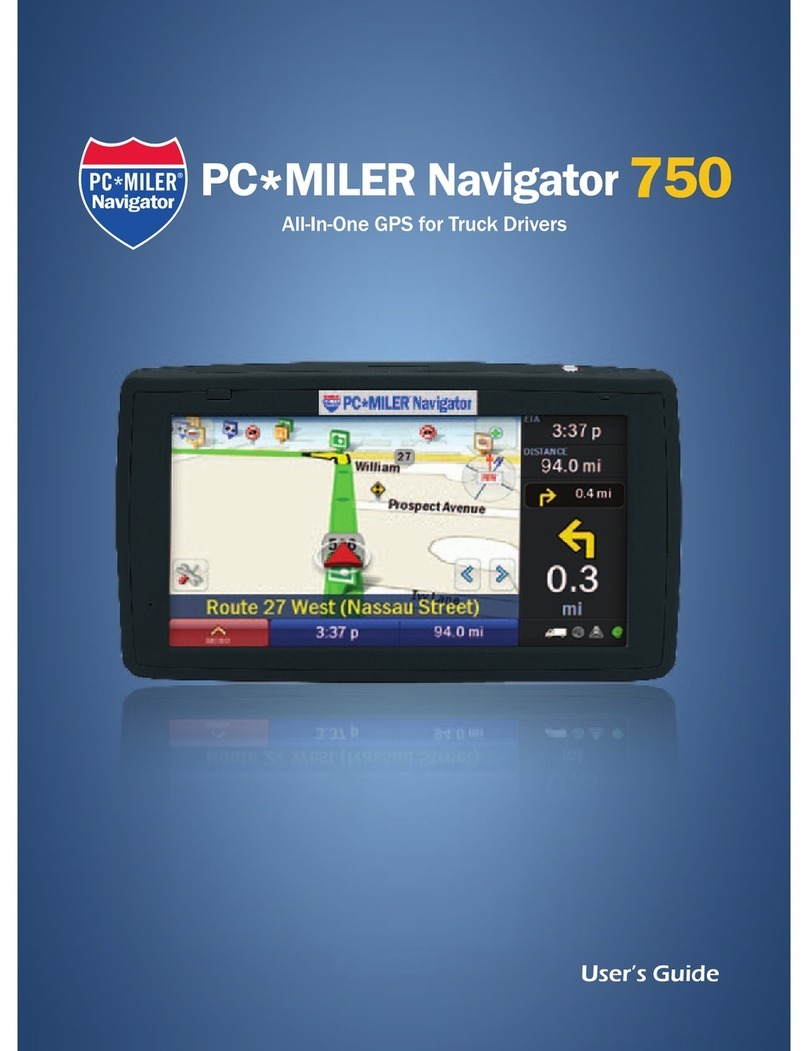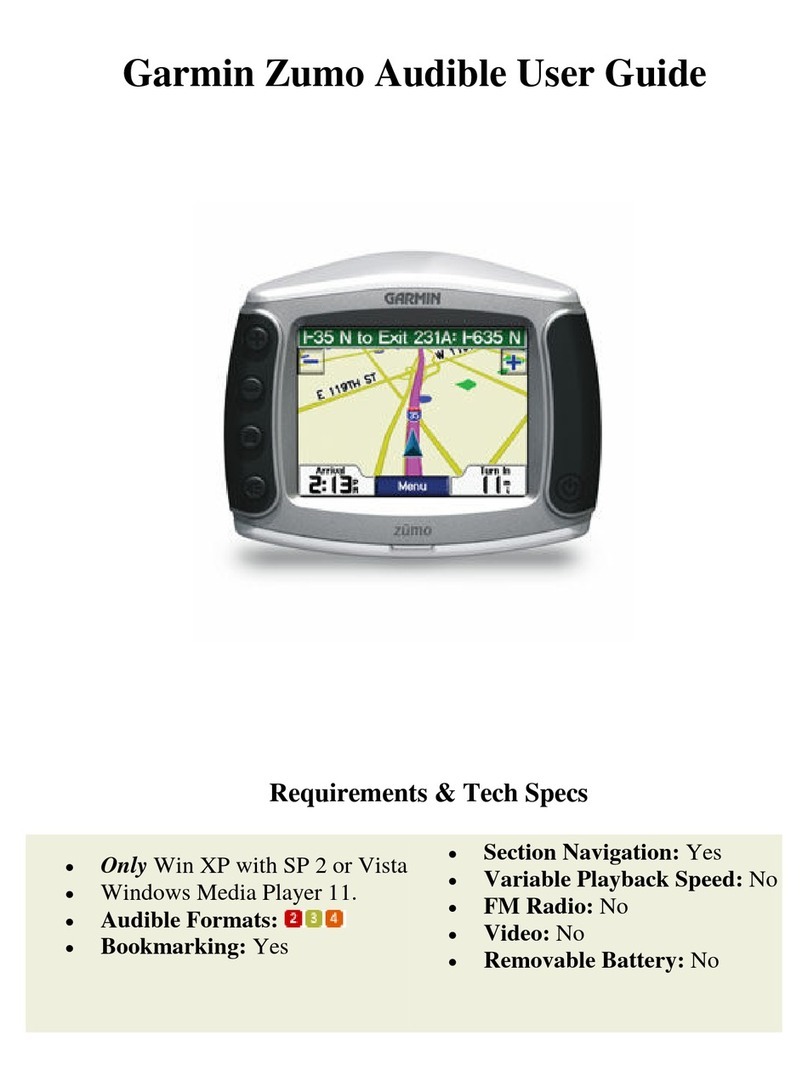Goplanet Saturn 100 User manual

Compass Systems Corp. Copyright@2010
Saturn 100 User Manual
Please read this manual before using Saturn 100

Compass Systems Corp. Copyright@2010
Content
Disclaimer ............................................................................................... 2
Warning................................................................................................... 3
About GPS............................................................................................... 4
Thank You for Choosing the Saturn 100............................................... 5
Conditions for Use: ................................................................................ 5
1. Introduction.....................................................................................................................6
2. USB Driver Installation ...................................................................................................13
3. LCD Icon Guide..............................................................................................................14
4. Instructions.....................................................................................................................17
5. Software (Saturn 100) Operation Description.................................................................25
6. Troubleshooting..............................................................................................................29

Compass Systems Corp. Copyright@2010
Disclaimer
Saturn 100
User Manual
Compass Systems Corp.
E-mail: service1@goplanetgps.com
This user manual is only intended for the personal use of the purchaser. The purchaser may
not copy or otherwise publish any part of this user manual for any purpose, in any form or
through any method, be it electronic or mechanical, photographic records included, except
with the prior consent in writing of Compass Systems.
Compass Systems reserves the right to modify without notice any of the information
contained within this user manual. Compass Systems reserves the right to change, improve
or modify its product or its content at any time without having to notify any person or
organization.
© Copyright 2010, Compass Systems Corp.
All rights reserved.

Compass Systems Corp. Copyright@2010
Warning
The correct and safe use of the Saturn 100 requires the user's familiarity with certain items
of knowledge. Please read through this user manual before operating the device.
The Saturn 100 is only intended to be an auxiliary device and can't be held legally liable for
any accidents resulting from errors in measurement through the user's incorrect operation or
use of the Saturn 100.

Compass Systems Corp. Copyright@2010
About GPS
GPS (Global Positioning System) is a satellite navigation system developed by the U.S.
Department of Defense. GPS consists of 32 satellites orbiting around 11,000 miles above the
surface of the Earth. These satellites travel at speeds that allow them to orbit the planet twice
a day and emit a low-powered radio signal. These signals are received and recorded using
five ground stations with extremely accurate clocks. By using these extremely accurate
clocks, the ground stations can determine with great precision the position of every satellite
in their orbit. Your GPS receiver is capable of "reading" the signals transmitted by these
satellites. By knowing the position and distance of al least 4 satellites, it's possible to
accurately calculate the receiver's current latitude, longitude and elevation.
WAAS enhances the accuracy of your GPS. WAAS stands for Wide Area Augmentation
System and was developed by the Federal Aviation Administration to augment the accuracy
of GPS for aviation use. It consists of additional ground stations that are placed at specific
locations where the exact coordinates are known. When used with a master station, the
accuracy of satellite positioning signals can be improved to almost three meters.
The Saturn 100 must scan and detect signals from at least 3 such satellites in order to
calculate your current location and movement. The Saturn 100 is designed for recreational
use only. Please do not use this product for industrial or professional surveying.

Compass Systems Corp. Copyright@2010
Thank You for Choosing the Saturn 100
The lightness, compactness and user-friendly interface make the Saturn 100 an excellent
auxiliary navigation aid when cycling. It can not only give you a better understanding of your
cycling activities but also effectively manage cycling routes.
The Saturn 100 provides only the information you need and nothing else. It is suitable for
use by all cyclists and is designed to be the easiest to use cycling GPS in the world. Its
satellite receiver works all around the world and will provide you with many years of useful
service. This manual will introduce you to the use and features of the Saturn 100 so you can
optimize performance and take care of the device as well. To ensure that you achieve the
best performance and service life from the Saturn 100, please read carefully through these
instructions before use.
Conditions for Use:
The Saturn 100 is not designed for indoor or underwater use. The device uses GPS
satellites to calculate distances and is designed to serve as an auxiliary navigation aid for
bicycles between the temperatures -10°C to 60°C. Using the Saturn 100 for cycling activities
therefore allows the device to deliver optimum performance.
If you find that any of the standard accessories listed in this manual are missing or damaged,
please contact your local distributor or retailer.

Compass Systems Corp. Copyright@2010
1. Introduction
1.1 Package Contents:
Before using this product, please check that the following items were included within the
package. If there are any missing items, please contact the distributor you purchased this
product from immediately.
1. Saturn 100, internal rechargeable lithium battery.
2. AC charger.
3. User Manual
4. USB Cable.
5. Bicycle Mount.
6. Protective Cover.
7. Strap.
1.2 Maintenance:
1. Do not attempt to disassemble the Saturn 100.
2. This device contains no user-repairable parts.
3. Please store the Saturn 100 out of direct sunlight or high temperatures.
1.3 Charging:
1. Connect one end of the USB cable to the rubber covered port on the base and the
other end into the AC charger. Plug the AC charger into a power socket.
2. The device can be on or off while charging. A battery icon will appear while charging
to show the current progress. The number of blocks will increase over time and when
fully charged, the icon will show three blocks.
3. A fully charged Saturn 100 can operate up to 27 hours with normal use and with the
backlight turned off. This, however, is still subject to usage and environmental
conditions.
4. The battery does not need to be fully discharged before recharging. If there is no
satellite signal, do not leave the battery to charge overnight.
5. The best and the fastest way of recharging the device is to turn the power off before
charging.
6. Once the device is fully charged, please put away the USB cable and AC charger, and
then close the rubber cover over the port so it is ready for use next time.
7.
To be sure the data is secured; please do charge your battery when the battery
indicates in block 1.

Compass Systems Corp. Copyright@2010

Compass Systems Corp. Copyright@2010
1.4 Introduction to the Hardware
1. Power: Use to turn power on(Hold on 1sec)/off(Hold on 3sec)and turn on
backlight(Push).
2. Menu: Switch display functions to check the detail information or to return to a
previous page.
3. Start/Stop/Setting: Turns the recorder on/off(Push), and resets parameter
settings(Hold on 3sec).
4. Navigation key 5 ways: Use to select the three modes, and press Enter to confirm the
selection.
Start/Stop data log
Hold on 3sec to set up
Navigation key 5 ways
USB Port
Power
Select Mode button
Bike>POI>Route

Compass Systems Corp. Copyright@2010
1.5 Installing the device cradle
Part List:
Device cradle *1
Rubber pad* 1
Cable tie *2
Installing the device cradle on the horizontal bar
1. As shown in the figure, insert the device cradle into the rubber pad.
2. As shown in the figure, insert the two cable ties into the device cradle.

Compass Systems Corp. Copyright@2010
Fasten the cable ties around the horizontal bar of the bicycle.
3. Cut off the extra cable ties.
4. Upon completion, insert Saturn 100 along the direction indicated by the arrow in the
figure.

Compass Systems Corp. Copyright@2010
Installing the device cradle on the vertical bar
1. As shown in the figure, insert the device cradle into the rubber pad.
2. As shown in the figure, insert the two cable ties into the device cradle.
3. Fasten the cable ties around the vertical bar of the bicycle.
4. Cut off the extra cable ties.

Compass Systems Corp. Copyright@2010
5. Upon completion, insert Saturn 100 along the direction indicated by the arrow in the
figure.

Compass Systems Corp. Copyright@2010
2. USB Driver Installation
Please download the USB Driver through Goplanet website www.goplanetgps.com, and follow the bellow
steps of installation. Please do not connect device to PC before installing USB Driver.
Follow the direction of program to finish the installation procedure.
Connect the device to PC
1. Connect one end to the USB cable to the USB port on PC.
2. Connect the other end of the USB cable to the port on the base of the device.
3. Hold down the power button on the device for 3 seconds until it turns on.
4. The system will automatically detect and identify the device.

Compass Systems Corp. Copyright@2010
3. LCD Icon Guide
1. Battery: Divided into 3 blocks. During normal use, this shows the amount of power
remaining. When charging, the blocks cycle from the bottom up, going from 0 to 3
blocks. Once fully charged, the icon stays at 3 blocks.
2. Satellite: Indicates the GPS positioning status. Blinking means no fix or
scanning for satellites. Constant means position acquired or still acquiring fix.
3. Time: Shows the cumulative riding time. It will start counting riding time when the user
starts riding (reaches 5km/hr). If riding time exceed 99:59:59, it hold to 99:59:59.
4. TOA: Time of Arrival. When switched to Waypoint and Route display modes, it shows
the estimated time of arrival.
5. :Time display.
6. :Shows the time for the current region. Taiwan, for example, must be set to UTC
+8hr based on the GPS reference time. If GPS fix not acquired, the time display
changes to --:--:--.
7. DTG: Distance to GO. When switched to Waypoint and Route display modes, shows
the estimated direct line distance.
8. ODO: Odometer. Shows the total distance traveled in MI (miles) or KM (kilometers).
9. DST: Distance. Displayed in MI or KM.
10.AZM: Azimuth. Reads the current azimuth from the digital compass and displays it in
degrees (°) and as a direction on the compass icon .
11.ALTI: Altitude. Shows the current altitude and bases on GPS.

Compass Systems Corp. Copyright@2010
12.TMP: Temperature. Shows the current temperature in ℃ or ℉.
13. 4 Digit Display.
14. :Used to display current azimuth, AZM, SLP or TMP.
15. :Switch between KM (Kilometer) and MI (Mile) for displaying the distance in
Bike, Waypoint or Route mode.
16. "Eight Direction" Compass: When showing the azimuth, each direction has a
range of ±22.5°. For example, the Northeast (45°) d irection includes all bearings
between 22.5°~67.5°.
17.MAX: Maximum speed. Shows the maximum riding speed on record as mi/h or km/h.
18.AVG: Average speed. Shows the average riding speed on record as mi/h or km/h.
19. 3 Digit Display. Indicate the MI/H, KM/H or calorie.
20.Calorie Unit: The Calorie display shows Kcal.
21. Speed Unit: The unit speed is to be measured in. Switch instantaneously
between .
22. Backlight indicator.
23. Recorder storage indicator: Divides the total number of entries into 6 parts.
Increments by 1 block for each sixth of total storage.
24. Bike Mode: Switching to this mode will show information about current ride.
25. WayPoint indicator: Press the Select button to cycle between waypoints
A, B, C and D.
26. Route indicator: Shows the location of the next destination.
27. Setup Mode indicator: Changes to Setup Mode when user enters setup mode.
28.If the data surpasses the maximum value which LCD may display, it displays the
maximum value. The user may use Saturn 100 Utility to get more information.

Compass Systems Corp. Copyright@2010
4. Instructions
Hold the Power button
1sec, the length of time
required to acquire a GPS
fix after starting this device
may vary: Normal
Approx. 2 minutes
Approx. 15~45 sec. A. First use after purchase
(may need to update
satellite information).
B. Frequent use in Taiwan.
Special Approx. 5 minutes A. Device has not been
used for over 3 months.
B. You are over 800km
away from the location
where you last used this
device.
Blinking icon means no fix or scanning. A constantly lit icon means fix acquired or being
acquired. When there is no GPS fix, time is displayed as --:--:--, distance as ---- and speed as
---.
4.1Bike Mode
This is the default mode upon startup. There are three main modes, these being Bike ,
Waypoint and Route . Press the Menu button cycles between Bike, WayPoint
and Route modes.
1. By default, the device starts in mode. The first page shows the following items:
(1) Current riding time, shown as Time.
(2) Total cumulative distance ridden, shown as ODO in MI
or KM.
(3) Current speed, shown as mi/h or km/h.
(4) Arrow pointing north.

Compass Systems Corp. Copyright@2010
2. After pressing the Navigation key 5 ways, the displayed items become:
(1) Current riding time, shown as Time.
(2) Distance ridden so far, shown as DST in MI or KM.
(3) Current speed, shown as mi/h or km/h.
(4) Arrow pointing north.
3. After pressing the Navigation key 5 ways a second time, the displayed items become:
(1) Current riding time, shown as Time.
(2) Distance ridden so far, shown as DST in MI or KM.
(3) Maximum speed, shown as mi/h or km/h.
(4) Arrow pointing north.
4. After pressing the Navigation key 5 ways a third time, the displayed items become:
(1) Current riding time, shown as Time.
(2) Distance ridden so far, shown as DST in MI or KM.
(3) Average speed, shown as mi/h or km/h.
(4) Arrow pointing north.

Compass Systems Corp. Copyright@2010
5. After pressing the Navigation key 5 ways a fourth time, the displayed items become:
(1) Current Time in 24-hour format: Shown as .
(2) Current azimuth and arrow pointing north: Shown as
AZM and °.
(3) Current speed, shown as mi/h or km/h.
(4) Arrow pointing north.
6. After pressing the Navigation key 5 ways a fifth time, the displayed items become:
(1) Current Time in 24-hour format: Shown as .
(2) Current speed, shown as km/h or mi/h.
(3) Current altitude, shown as ft.
(4) Arrow pointing north.
7. After pressing the Navigation key 5 ways a sixth time, the displayed items become:
(1) Current Time in 24-hour format: Shown as .
(2) Current temperature, shown as TMP in °C or °F.
(3) Current calories, shown as cal if under 1Kcal and as
Kcal otherwise.
(4) Arrow pointing north.

Compass Systems Corp. Copyright@2010
4.2 Waypoint Mode
In Bike mode, press the Menu button switches to Waypoint mode. At startup, waypoint A is
displayed. Press the Navigation key 5 ways to cycle through waypoints A~D. When the Menu
button is pressed to exit or access this mode, it will remember which waypoint (A~D) was last
displayed.
(1) Estimated time of arrival shown as TOA.
(2) Estimated direct line distance shown as DTG in MI or KM.
(3) Current speed, shown as mi/h or km/h.
(4) Arrow pointing towards the destination.
After querying GPS signal, press the ENTER button from 5 ways key to set up the waypoint
A~D.
Press the Navigation key 5 ways button to cycle through waypoints A~D.
When the rider is within 50 m of waypoint A, B, C or D, a buzzer will sound 5 times (lasting 1
second each time at 0.5 second intervals). The arrow will also blink each time the buzzer
sounds. The user can press any button to stop the buzzer or wait for it to finish and the arrow
will continue blinking. When within 10m of the waypoint, all eight points of the compass icon
will start blinking and only revert to normal when the rider is more than 10m away from the
waypoint.
This item can only be calculated or displayed when GPS coordinates are available. When
GPS fix has not been acquired, time is shown as --:--:--, distance as ---- and speed as ---. If
speed is less than 5km/hr, time is shown as --:--:--.
Compass Systems Corp. Copyright@2010 21
Table of contents
Other Goplanet GPS manuals
